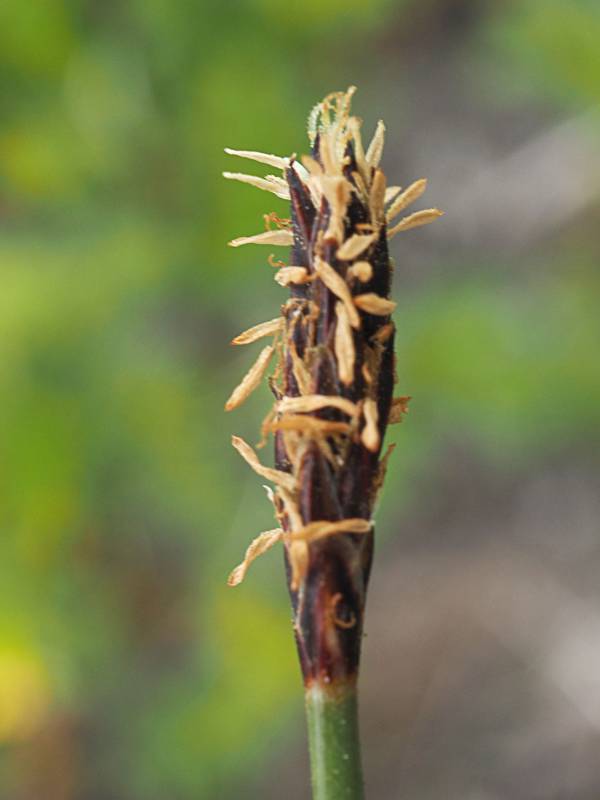Hosted by the University of Washington Herbarium, Burke Museum
Publication: Fl. S.E. U.S. 184, 1327. 1903.
Origin: Native
Herbarium search: CPNWH
Notes: FNA23: "Eleocharis macrostachya probably occurs in Saskatchewan; I have not seen specimens. It is extremely variable. Cytotaxonomic studies (S.-O. Strandhede 1967; L. J. Harms 1968) and morphology suggest that it is a diploid-polyploid complex at least partly of hybrid origin from E. palustris and both E. erythropoda and E. uniglumis. The 2n = 38 plants of E. macrostachya may comprise the American counterpart of the European E. palustris subsp. vulgaris, which presumably originated from E. palustris subsp. palustris and E. uniglumis (S.-O. Strandhede 1966). Although recognition of infraspecific taxa is premature, the following three intergrading variants are notable:
Variant b is very variable in comparison with variant a. It differs from variant a in having culms terete or slightly compressed; distal leaf-sheath apices often obtuse, tooth rarely present, to 0.1 mm; spikelets broadly lanceoloid to ovoid; floral scales 3.5–4(–4.5) × 1.7–2+ mm; achenes 1.3–1.5 mm, rarely to 1.8 mm; culm stomates 60–72 µm; chromosome numbers (for which I have seen vouchers, all from Kansas and South Dakota), 2n = ca. 38. It is wide-ranging, known from inland localities at 20–2300 m from Manitoba west to Yukon and British Columbia, south to Alabama, Mississippi, Louisiana, Texas, New Mexico, Arizona, and California, and in Mexico from Baja California. Intermediates between variant b and both Eleocharis erythropoda and E. uniglumis are widespread, and intermediates with E. ambigens occur in Louisiana. Most plants of variant b have floral scales to 4 mm and achenes to 1.5 mm; plants with scales to 4–5 mm and achenes sometimes more than 1.6 mm occur in California, Nevada, Oregon, and Washington.
Variant c differs from variant b in having spikelet scales mostly uniformly dark chestnut-brown, not carinate, (3.5–)4–5.5 × 2–2.5 mm. Its achenes are often unusually large, 1.3–1.8(–2) × 1.1–1.5 mm. It is known from near sea level on the coasts of British Columbia, Ontario, and Quebec (James Bay and Magdalen Islands); Alaska, California, Oregon, and Washington. Some plants are intermediate between variant c and variant b. Several specimens I have seen from far eastern Russia are very similar to American plants of Eleocharis macrostachya, variant c. Except for having incompletely amplexicaulous proximal scales, and subproximal scales often without a flower, variant c closely resembles many Eurasian specimens of E. uniglumis."
Last updated 11/18/2023 by David Giblin.

